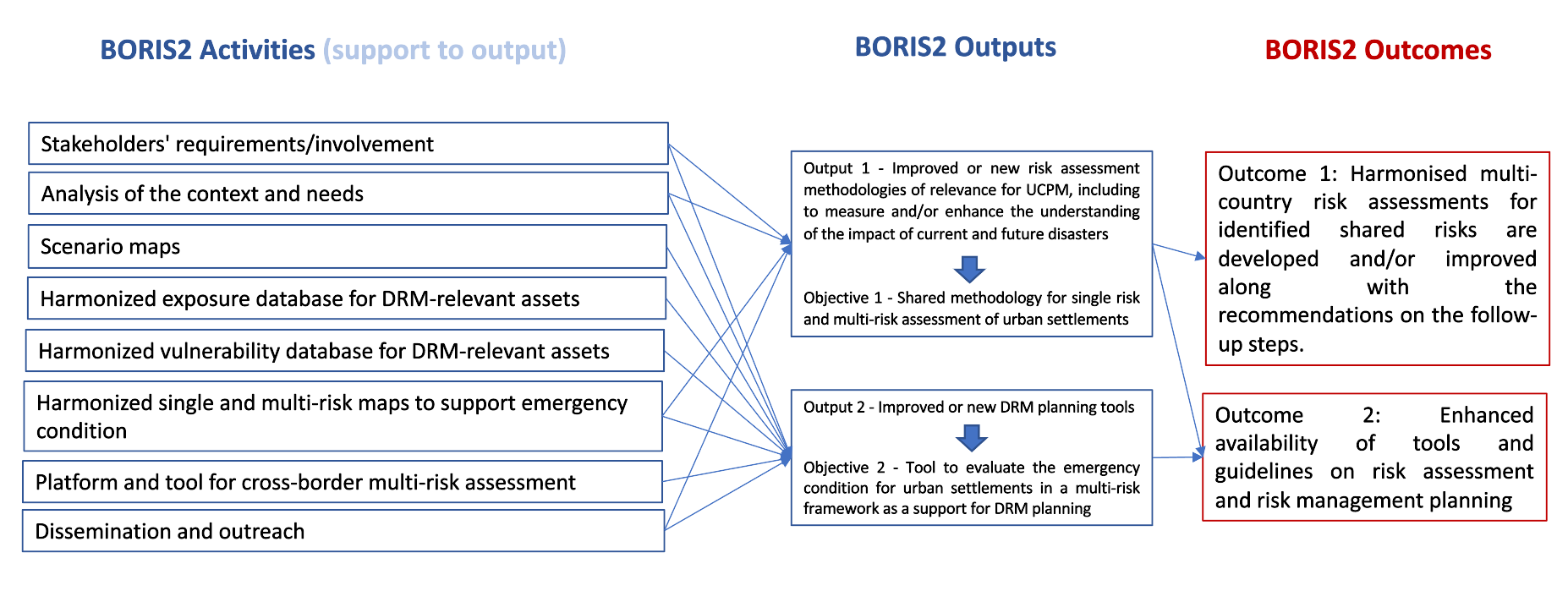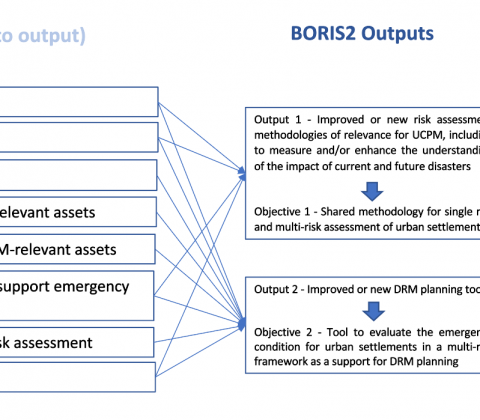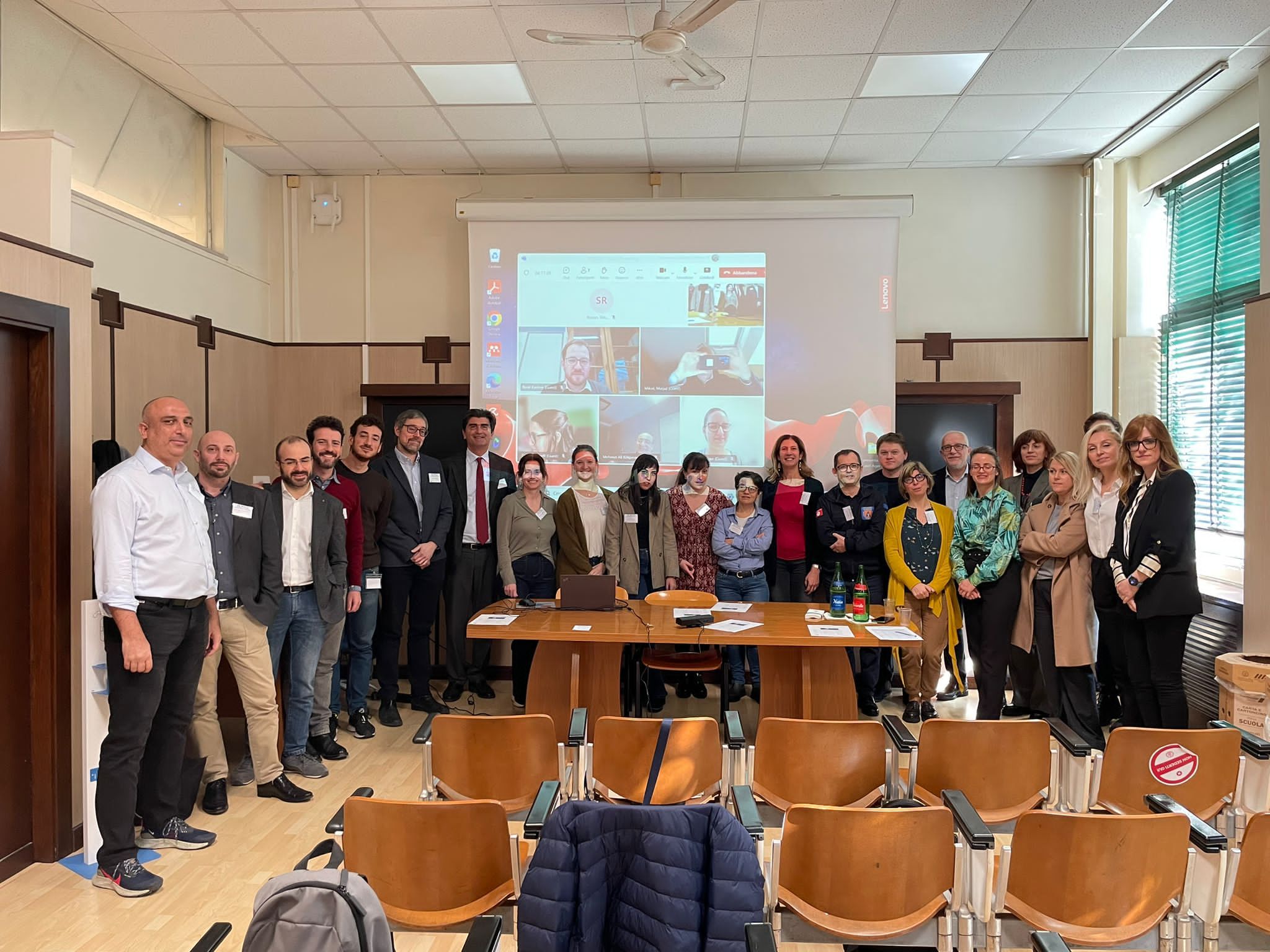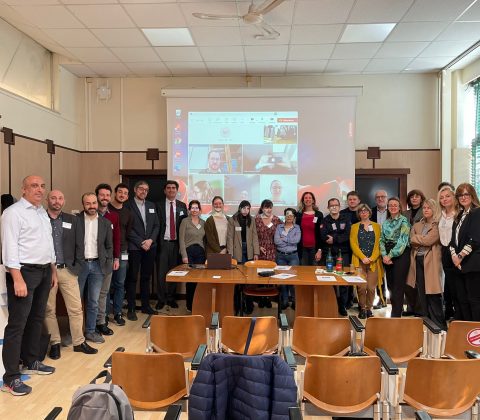Posts in Category: BORIS2


BORIS2 Leaflet
The BORIS2 leaflet provides a quick overview of the project goals, its partners, activites and outputs. In case you would like to learn more, please visit the project page on the UCPKN platform or the BORIS website.
View or download it here:


BORIS2 has started!
With BORIS2, we continue our efforts to empower stakeholders with a harmonised multi-risk assessment methodology and a tool supporting riskassessment and emergencyplanning in cross-border areas.
In BORIS2, the multi-risk analysis methodology developed in the first project BORIS, that was implemented at municipality scale, will be modified for application at sub-municipal level (e.g. at census tract level) considering relevant multi-risk scenarios. This will enable highlighting urban areas that are most impacted by single and multiple risks for a better emergency planning. Moreover, critical infrastructures and their connections will be included for the evaluation.
Expanding on the concept of Limit Condition for the Emergency and its associated evaluation model proposed by the Italian Civil Protection Department, which is aimed at checking the physical efficiency after a seismic damaging event of the emergency system of urban settlements, a multi-risk approach that could be applied also in cross-border regions will be proposed delivering a comprehensive methodology for institutions operating in different national contexts.
A “scenario-driven” approach will be tested for the assessment of the impacts of seismic, flood or multirisk events on assets and infrastructures relevant for emergency management. Results of BORIS2 will be integrated in the existing BORIS platform, ensuring its interoperability.
The project consortium consists of the following organisations:
- Italian Center for Research on Risk Reduction CI3R (coordinator)
- University of Ljubljana
- Disaster Competence Network Austria
- University of Montenegro
- TED Üniversitesi
Also, the following organisations are part of BORIS2 as Associated Partners:
- Università degli Studi di Udine
- Friuli Venezia Giulia Civil Protection
The BORIS2 kick-off took place on 7-8 February, 2024 at the University of Naples Federico II (Università degli Studi di Napoli Federico II) with not only the project consortium present but also stakeholders. We were happy to welcome Daniela Di Bucci from the Italian National Civil Protection Department as well as Aldo Primiero from Friuli Venezia Giulia Civil Protection who provided insights into the work and challenges of civil protection in cross-border areas.
We look forward to our next steps in BORIS2!
The project is co-financed under GA n° 101140181 in the Union Civil Protection Mechanism (call UCPM-2023-KAPP-PREV).
